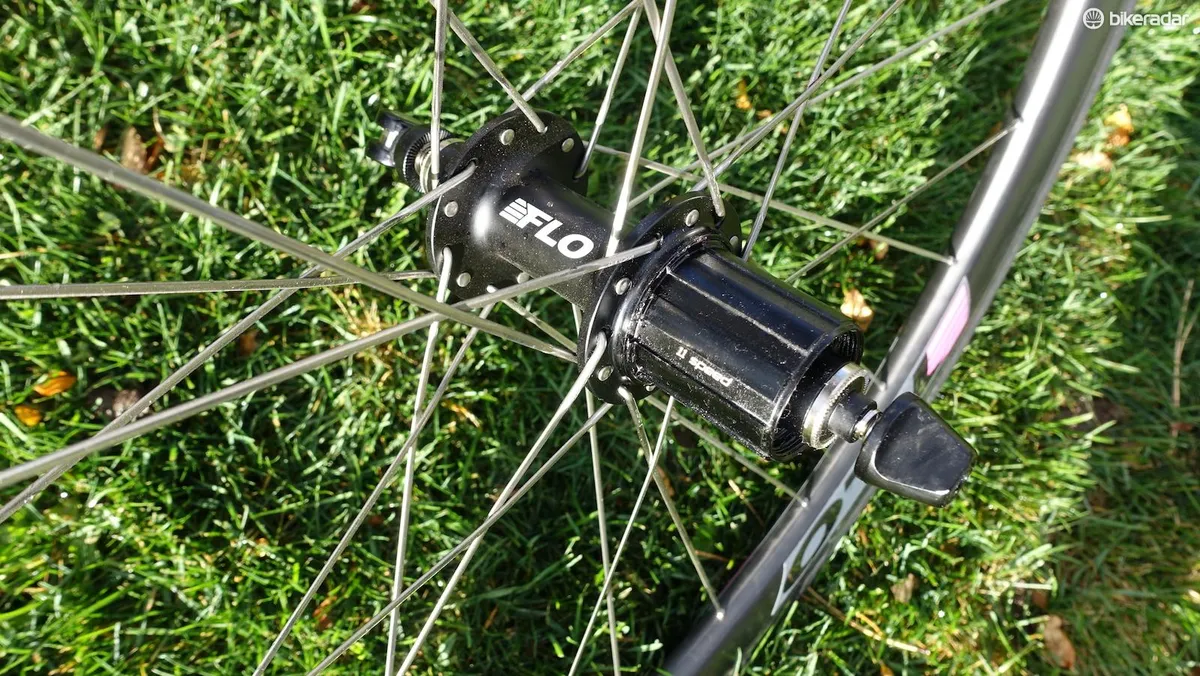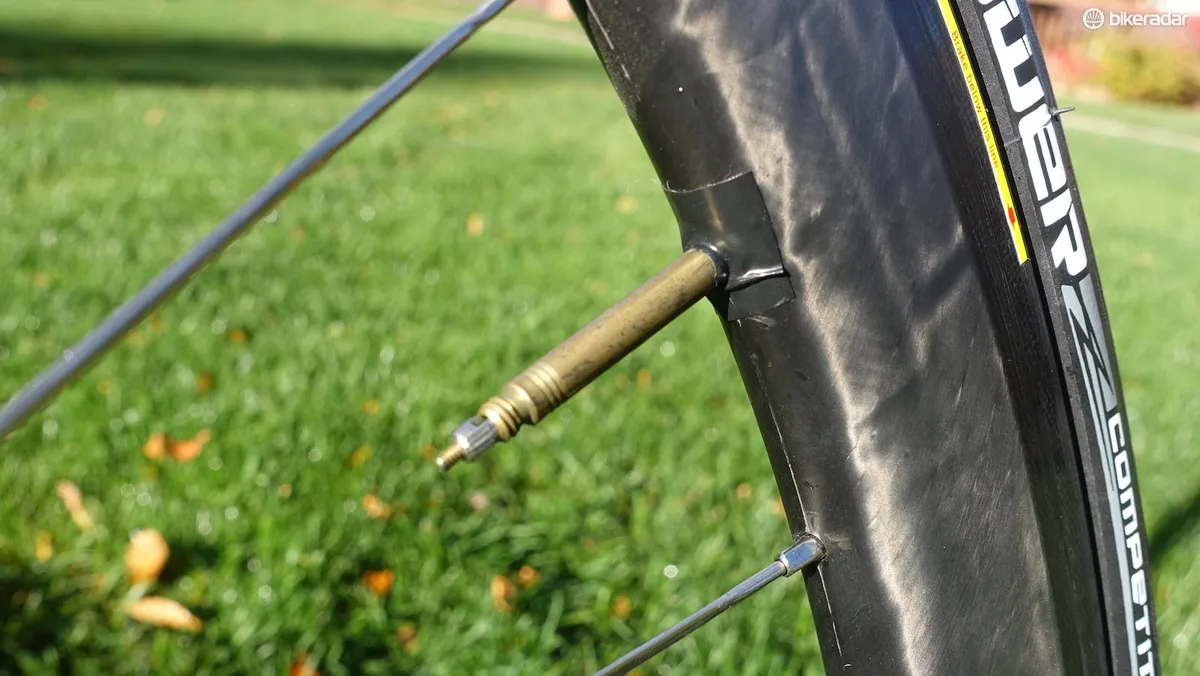The newest wheel in the FLO collection, the FLO 45 Carbon Clincher is designed as an all-around aero wheel for racing and daily rides.
Two features make the FLO 45s one of the most attractive sets of carbon clincher wheels currently in production: price and aerodynamics.
Selling for $1,149 for the pair and with a huge body of research behind the rim’s design, FLO wheels appear almost too good to be true.
FLO 45 Carbon Clinchers highlights
- 690g front w/ rim strip
- 860g rear w/ rim strip
- 110g skewers
- Tubeless compatible
High performance, low price
The Thornham brothers, Jon and Chris, are the founders and owners of FLO and they prioritized value when designing their wheels.
At $549 for the front and $599 for the rear carbon clincher, there are few other carbon clincher wheels on the market and certainly none that perform like the FLO 45s.
Boyd Cycling, out of South Carolina, come close with a pair of carbon clincher 44mm at $1,500 a pair. Psimet’s C550 wheelset runs $1,179 for the pair.
There are two main reasons for the low price. One, the Thornham brothers sell direct via their website. And two, they sell in batches of 500-600 wheels.
Right now the company estimates that the next order will go live sometime this month. You can sign up for an email notification that will alert you a week before the sale and then it's first-come, first-serve once the sale goes live.
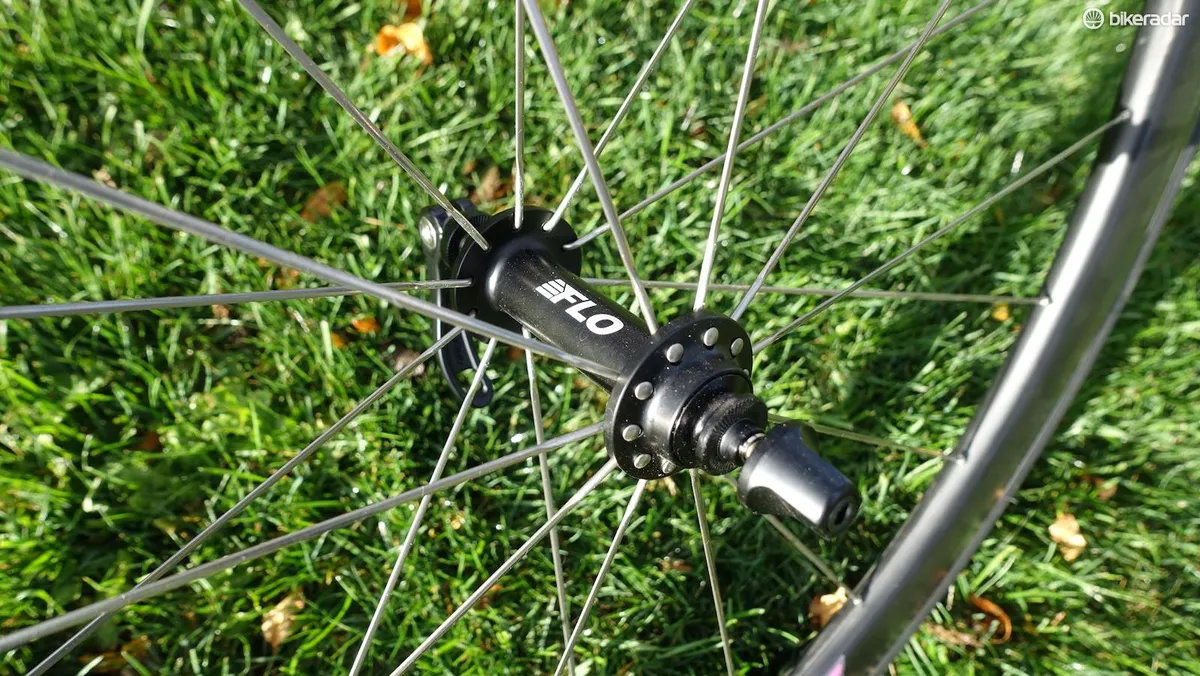
That price is even more attractive when you realize the development involved in the rim shape (see next section).
The wheels use premium Sapim CX-Ray aero spokes. Hubs are FLO’s own Vortex 2 design with an aluminum freehub body and Japanese stainless steel bearings, a nice touch that should offer longer life than less expensive bearings.
For best aerodynamics, FLO recommends Continental GP4000s II tires in a 23mm width
While the FLO 45s are tubeless compatible they do not arrive with tubeless rim strips or valves. (I found Silca’s 60mm tubeless valves to be a perfect length for the FLO rim.)
They do come with a set of standard clincher rim strips, brake pads, titanium quick releases skewers and a cassette spacer for use with a 10-speed cassette.
Tires mounted easily to the 24mm wide rims. The internal width for the 45.5mm deep rim is 17mm. While not the widest on offer, this width does play nicely with both 23 and 25mm tires.
For best aerodynamics, FLO recommends Continental GP4000s II tires in a 23mm width. I used a set of Michelin’s new Power Competition tires for all of my test rides.
Aerodynamics
FLO’s first stab at wheels was based on the belief that the majority of the time a rider is encountering wind yaw angles in the range of 10 to 20 degrees. That is to say that much of the time we experience a crosswind.
As with many things in cycling, talking to different bike and wheel companies results in different answers as to what yaw range bikes and wheels should be designed for.
While happy with the first collection of wheels, FLO knew there was room to improve.
For its new line of wheels, FLO first went about testing assumptions regarding wind angles. As triathletes, their primary interest was the conditions experienced on four popular Ironman courses.
Over the course of 15 months, the brothers collected data using what is essentially a mobile weather station mounted to the front of a bicycle. They recorded relative velocity and wind yaw angle and used video to help contextualize data with what was experienced on the road.
After collecting 110,000 measurements (55,000 readings of relative speed and yaw), their findings showed that much of the time, riders are experiencing much lower yaw angles than their previous assumption of 10–20 degrees. In fact, FLO claims that 80 percent of the time cyclists experience between zero and 10 degrees of yaw.
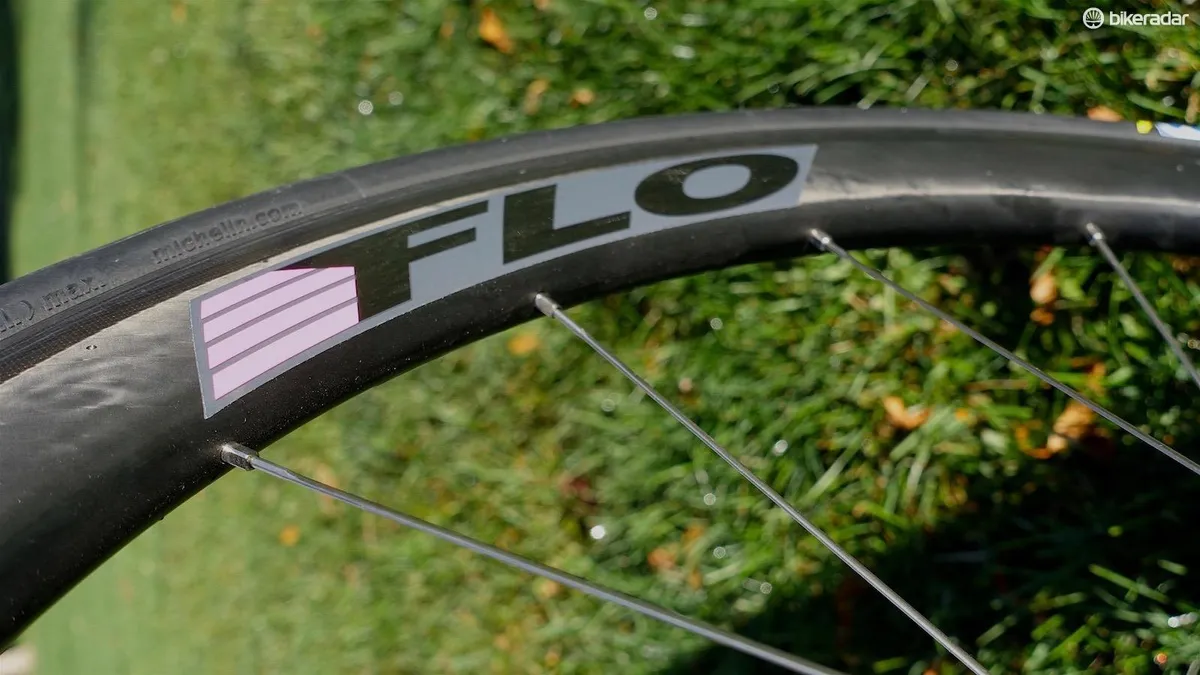
Based on these findings, the Thornhams designed new rim profiles using three-dimensional modeling and computational fluid dynamics (CFD).
To help in the virtual modeling, the pair actually cast Continental’s GP4000s II tire so that its shape would be hyper accurate. The environment they build in CFD was based on its vast data collection.
Each rim depth ended up with its own profile and the new FLO 45 is faster than the previous generation FLO 90
Instead of using best guesses at rim shape and putting them through CFD, the brothers created an optimization algorithm that searched for fast rim shapes. This was no small task.
The parameters set for the algorithm included reducing aerodynamic drag, maintaining crosswind stability of the previous generation, maintaining dimensions that would fit inside a bicycle and a list of dimensions for each depth range (e.g. the new FLO 60 could have a depth anywhere from 56 to 65mm).
The Thornhams called in some experts and their supercomputers to help with the computations. Even with the added computational power, it still took two months to complete the calculations.
For the FLO 45 alone, 150 iterations were tested using the algorithm. Then the Thornhams headed to the A2 wind tunnel to verify their findings. While there the brothers also tested 20 different tires to find the aerodynamically fastest models on the new rims.
Each rim depth ended up with its own profile and the new FLO 45 is faster than the previous generation FLO 90, the Thornhams said.
On the road
It’s clear that the brothers put in an incredible amount of work when designing their new wheels.
On the road, I have to say, the FLO 45s deliver. They are very stable at high and low speeds, and in all the breezy wind conditions that Colorado’s Front Range could throw at them.
I used them on quick group rides, solo climbing days and gusty descents, and they never scared me like some other wheels have in the past.
Braking was excellent on the FLO wheels when using the included brake pads. I experienced very consistent, powerful braking throughout my time and no squealing on the FLOs.
This is a far cry from some early carbon clinchers, but it must be said that all the top players have this figured out as well.
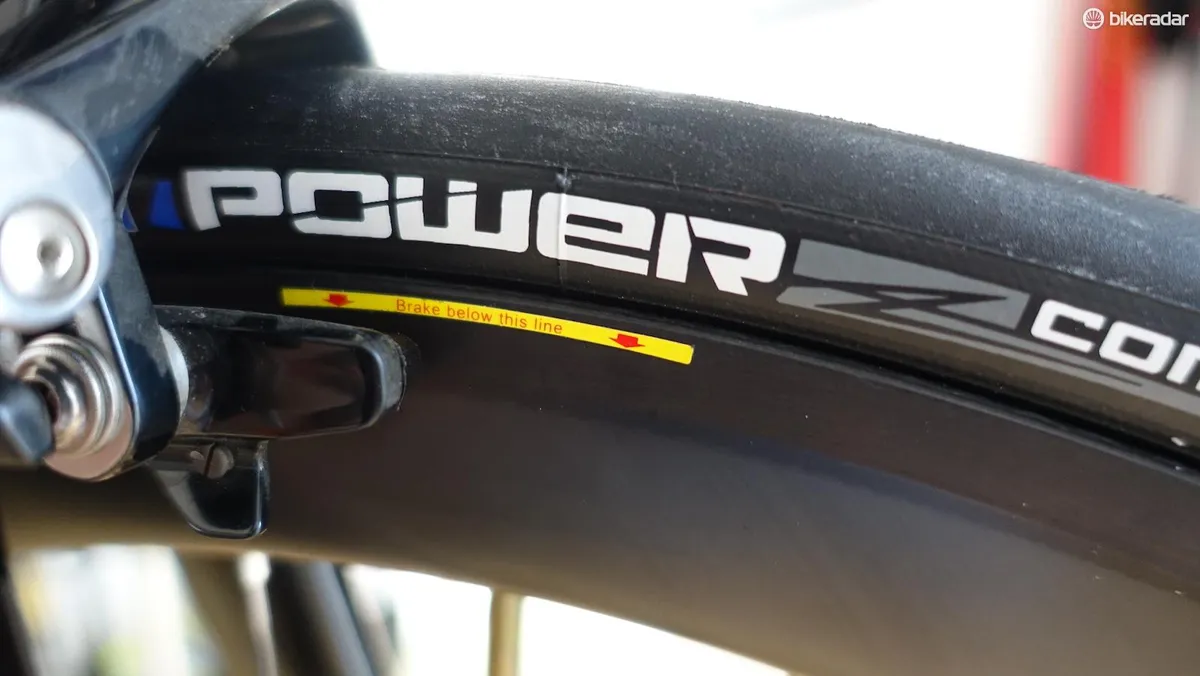
There is a downside, but it’s a minuscule one. The valve stems can tick against the valve hole in the rim. This was remedied with a piece of electrical tape.
I also like the custom decal options. It’s a small thing, but a way to personalize and coordinate your wheels with your bike is pretty nifty. Buy a new bike? Get some new decals to match.
Our policy is to have the most open and honest testing protocol we can
They also felt fast. That’s vague, I know. I’ve most recently ridden Bontrager Aeolus 5s and I would say that the FLO wheels ride similarly. That’s high praise in my book.
Of course all of this is anecdotal, much like any review. I wasn’t able to send the wheels to a wind tunnel to see how they match up to the competition and in a way it doesn’t matter. Why? Well, for a couple reasons.
Unless you do a huge amount of research about the particular conditions you most often ride in and match that up against a wheel's specific claims, then buying what is "fastest" is essentially a leap of faith.
Each manufacturer designs to different criteria, so there are multiple “fastest” wheels in the world concurrently. The qualifiers (yaw angles, velocity, tested in a bike or alone) necessary to make that "fastest" statement are perhaps more important than whether a given wheel is faster than another.
FLO doesn’t make claims about its wheels in relation to its competition. Instead the Thornham brothers focus on communicating their methods, putting them into real world terms and let their work speak for itself.
"Our policy is to have the most open and honest testing protocol we can," Jon Thornham said. "That way people understand what we are doing and what they are getting.”
FLO wheels vs. Zipp wheels
If the FLO wheels are 90 percent as fast as a pair of Enve or Zipp wheels, but they cost less than half as much, do you care? That 90 percent isn't a measured statistic — just a theoretical question.
What is certainly faster over the course of a race season though is having two pairs of wheels that allow you to optimize your bike for varying conditions and courses.
For example a rear Zipp 303 Firecrest carbon clincher wheel retails for $1,150, exactly the same as a pair of FLO 45s, 60s, or 90s. At 45 millimeters deep the Zipp 303 is within a millimeter of the FLO’s 45.5mm rim.
The FLO 45s are even a tad lighter than the Zipps at 1,550 grams versus 1,625 grams. But at that price, you could also conceivably purchase a pair of FLO’s 60mm wheels for time trials or flat road races. Going a step further, you can buy wheels individually, so consider a 90 rear and a 60 front. You get the point.
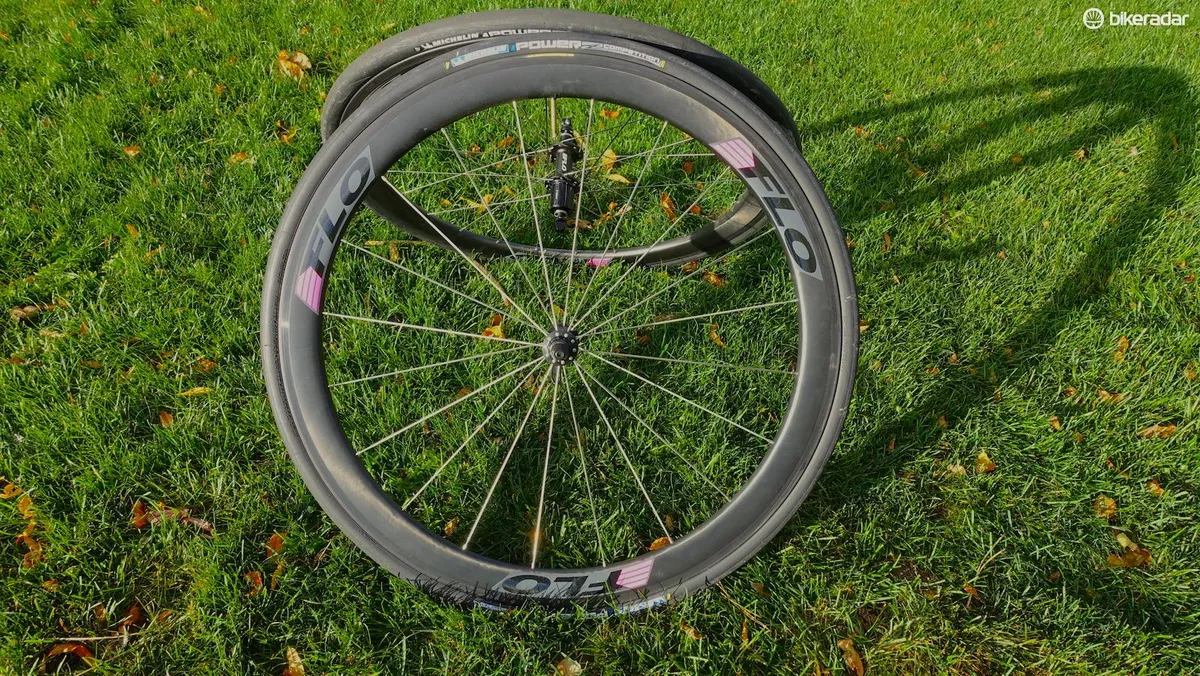
Bottom line: good, fast wheels at a great price
If there is a better deal in the carbon aero wheel market, I can’t find it.
While cheaper carbon clincher wheels may exist (Psimet, for example), none rival the engineering and design of the FLO models.
The aerodynamic stability, low weight and excellent braking are capped by an exceptionally low price. Two sets of FLO wheels can be purchased for less than the cost of a pair of ENVE SES wheels. This would allow a cyclist to build out a wheel arsenal to battle the ever-changing conditions of bike racing, time trials and triathlon.
If new wheels aren’t in the budget, but you’re interested in learning more about wheel aerodynamics and tire pressure, give the FLO Cycling website a look. There is a lot of information on offer.
Just remember that FLO sells wheels in batches, not just whenever you want to order, like most other brands.

